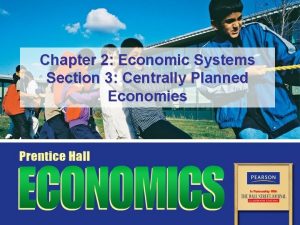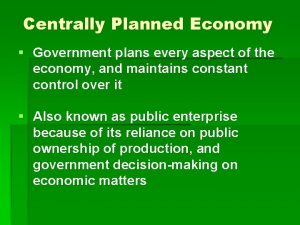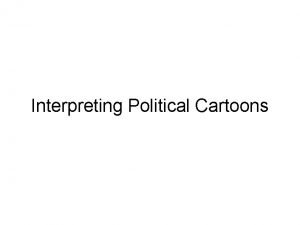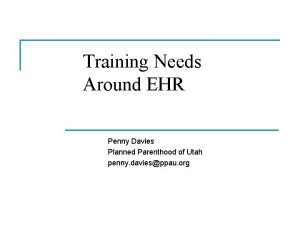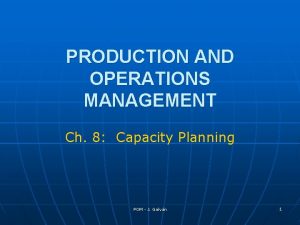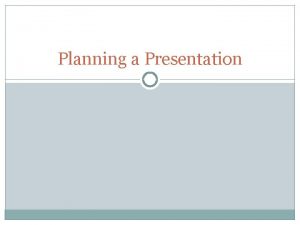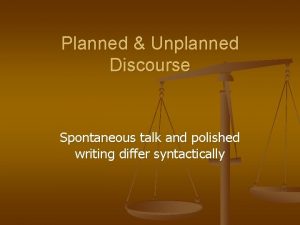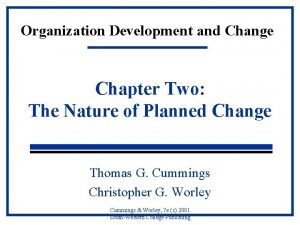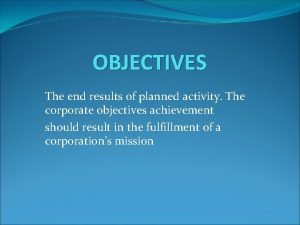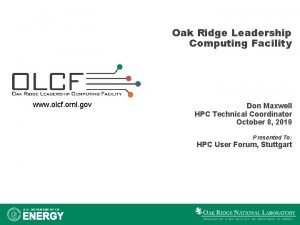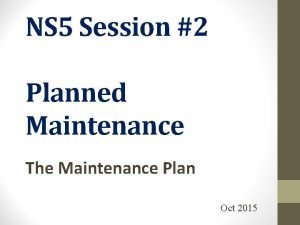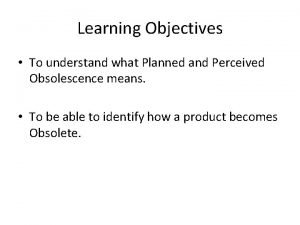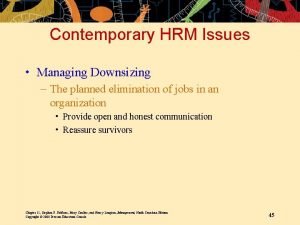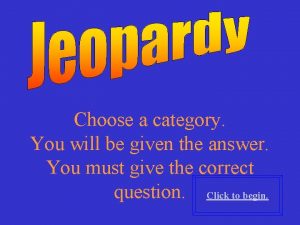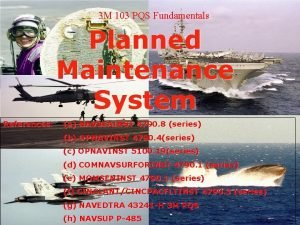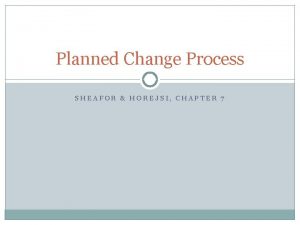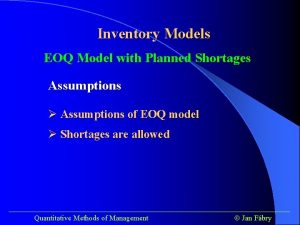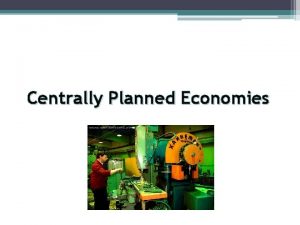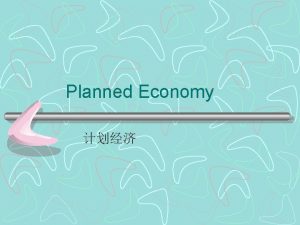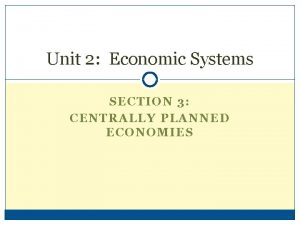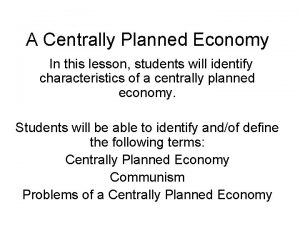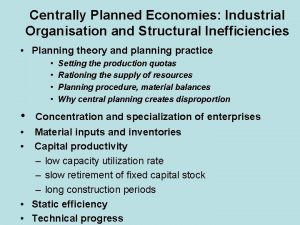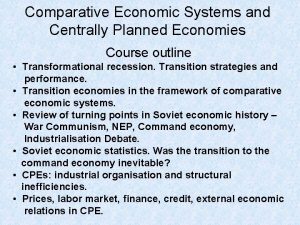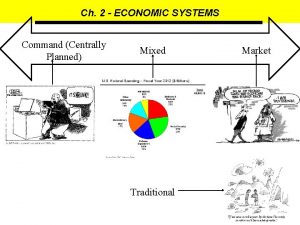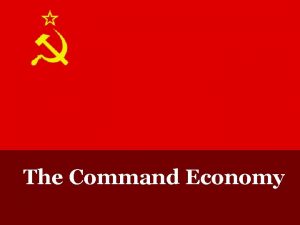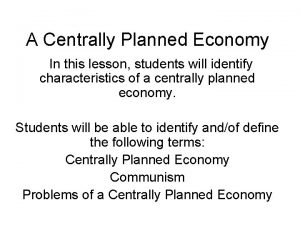Chapter 2 Section 3 Slide 1 Centrally planned































- Slides: 31

Chapter 2 Section 3

Slide 1 • Centrally planned economies operate in direct contrast to free market systems. • Centrally planned economies are the type of economy where the government is basically in control of everything in the country.

Slide 2 • The central government answers the 3 key economic questions for the country. • Questions dealing with production will be addressed by the government. • State-Can be used to refer to the federal government. i. e. a ‘state-run factory’

Slide 7 • In a centrally planned economy, the government owns and controls the three factors of production • The federal govt. will make all decisions on how to develop land, labor, and capital

Slide 9 • Socialism is a social and political philosophy based on the belief that democratic means should be used to distribute wealth evenly throughout a society. • This was brought about as a means to keep rebellion against the government from taking place.

Slide 10 • Communism- Political system characterized by a centrally planned economy where all power rests in the hands of the central govt. • It is the political system that arose out of the philosophy of socialism. • Communism and socialism are not the same thing, but often go together

Slide 11 • Authoritarian is where governments exact strict obedience from their citizens. • Some communist type governments are authoritarian in nature due to the fact that the govt. controls the economy • Many individual freedoms are suppressed by an authoritarian style govt.

Slide 12 • The former Soviet Union was a communist country.

Slide 13 • The government of the soviet union had collectives or large farms leased from the state to peasant farmers or people who want to have a farm in the country. This means that the people had to pay monthly or yearly how ever it was set up or maybe they had to give a portion of the farms profits to keep the land.

Slide 14 • The factories in the soviet union were also state owned.

Slide 15 • Heavy Industry requires a large capital investment to produce items used in other industries. • Examples would be for the space program or the military

Slide 16 • The Soviet Union arose out of a pair of revolutions in Russia in 1917. • This is when the Soviet Union really got started. • Soviet planners were most concerned with building national power and prestige • Soviet Union had central government state- owned farms and factories.

Slide 17 • On state run farms the state provides farmers with all the equipment needed to run the farm. • The state also gets some of the profit that the farm makes and then pays the farmers with that money.

Slide 18 • Farmers receive a share of what is produced on the farm or the amount of income that is made on the farm. • All factories are owned by the state and the workers there were also paid by the state. • Jobs in factories are guaranteed and the wages were paid by the government, not the factory. • Factories had quotas they had to hit with production.

slide 19 • When the production quota was met then there was no reason to keep working or making the product that they produce. • So if you finished ten days ahead of schedule then you would probably just get the rest of those ten days off.

slide 20 • The products made in the Soviet Union were of poor quality and made at a great speed of rate. • Most companies didn’t focus on quality but mostly quantity due to the nature of the quota system.

Slide 21 • Central planning could be used to jump start an industry and guarantee many jobs and income.

slide 23 • A disadvantage with centrally planned economies is that their performance almost always falls short of what they need for their citizens. • This is due to the difficulty of central planning. Especially, for a large country.

Slide 25 • Centrally Planned Economies do not reward innovation, and actively discourage certain types of thinking and change that govt. officials feel would undermine govt. control. • The centrally planned economies have lacked flexibility to adjust for the needs and wants of consumer demands.

Slide 26 • Command economies sacrifice individual freedoms in order to pursue societal goals. • In some cases, the government controls what job you work in a command economy.

Slide 29 • Karl Marx and Friedrich Engels introduced their socialist philosophy in the book The Communist Manifesto in the year 1848.

Questions • How do socialism and communism differ?

• What characterizes an authoritarian government?

• In the Soviet Union, what was the opportunity cost of the emphasis on heavy industry?

• Why do centrally planned economies have difficulty meeting consumer needs?

• Describe how a centrally planned economy is organized?

• Identify the problems of a centrally planned economy?

• Which of the following economic goals are difficult to achieve in a centrally planned economy? A)economic efficiency B)economic security and predictability C)economic equity D)economic growth and innovation

• What centrally planned government was the former Soviet Union under?

• How did the Soviet Union form?

• What did the state provide all farmers with on state-run farms?
 Section 3 centrally planned economies
Section 3 centrally planned economies Describe how a centrally planned economy is organized
Describe how a centrally planned economy is organized Centrally planned economy
Centrally planned economy Planned economy or planned destruction political cartoon
Planned economy or planned destruction political cartoon Ano ang heel and toe polka
Ano ang heel and toe polka Centrally acting skeletal muscle relaxants
Centrally acting skeletal muscle relaxants Centrally acting sympathoplegic drugs
Centrally acting sympathoplegic drugs Muscle relaxant classification
Muscle relaxant classification Slide method factoring
Slide method factoring Chapter 10 section 1: meiosis
Chapter 10 section 1: meiosis Ppau [email protected]
Ppau [email protected] Any planned combination of education political
Any planned combination of education political System capacity definition in operations management
System capacity definition in operations management Planned and unplanned presentation
Planned and unplanned presentation Planned and unplanned discourse
Planned and unplanned discourse Critique of planned change
Critique of planned change This is the end result of an activity.
This is the end result of an activity. Oak ridge leadership computing facility (planned)
Oak ridge leadership computing facility (planned) Vessel planned maintenance system excel
Vessel planned maintenance system excel Planned giving certification
Planned giving certification Planned and perceived obsolescence
Planned and perceived obsolescence Planned elimination of jobs
Planned elimination of jobs Grandfolkie planned change theory
Grandfolkie planned change theory Retail location types
Retail location types Patient admission process
Patient admission process Planned agricultural communities
Planned agricultural communities Planned maintenance system onboard ship
Planned maintenance system onboard ship 7 step planned change process
7 step planned change process Eoq model with planned shortages
Eoq model with planned shortages Types of planned maintenance
Types of planned maintenance Medfusion planned parenthood
Medfusion planned parenthood Masonry saw shall be guarded with a
Masonry saw shall be guarded with a

